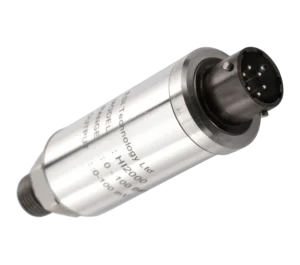Our Unit Converter
The ESI Unit converter allows you to quickly and easily access a conversion tool to work out your preferred unit of pressure measurement wherever you may be. Whether out on-site or in the office.

Download the ESI-USB© Software
The ESI-USB© software allows you to connect your ESI transducer to your laptop or PC and be up and running monitoring pressure data within ten minutes. The software auto-updates and is compatible with Windows 8, 10 & 11.

In the demanding world of aerospace engineering, precision, safety, and reliability are paramount. As aircraft and spacecraft operate in extreme environments, maintaining control over pressure systems is essential. One critical component that makes this possible is the high precision pressure transducer. At ESI Technology, we understand the vital role these sensors play in aerospace systems. This article explores how high precision pressure transducers ensure safety and reliability in aerospace applications and why they are indispensable in this high-stakes industry.
The role of pressure transducers in aerospace
A pressure transducer, also known as a pressure sensor or transmitter, converts pressure into an electrical signal that can be interpreted by control systems. In aerospace, these sensors are used in a variety of systems including fuel management, hydraulic systems, cabin pressurisation, engine monitoring, and environmental control systems.
The accuracy and durability of these sensors are crucial. A slight deviation in pressure readings can result in inefficient performance or, in worst-case scenarios, catastrophic failure. That’s why aerospace applications demand high precision pressure transducers that can withstand extreme temperatures, vibrations, and pressure fluctuations.
Why precision matters in aerospace systems
Precision is not a luxury in aerospace—it is a necessity. Whether managing the fuel-to-air ratio in jet engines or monitoring cabin pressure at cruising altitude, accurate pressure readings are vital. High precision pressure transducers help pilots and engineers make informed decisions and allow automated systems to operate with confidence.
In environments where human lives and multimillion-pound assets are on the line, even minor inaccuracies can compromise mission success and safety. This is how high precision pressure transducers ensure safety and reliability in aerospace: by providing consistent, dependable data that supports critical decision-making processes.
Enhancing safety through reliability
Reliability is another key benefit of high precision pressure transducers. These devices are engineered to maintain performance over long periods, even under harsh conditions. In aerospace, sensors may be exposed to wide-ranging temperatures—from sub-zero conditions at high altitudes to intense heat during engine operation or atmospheric re-entry.
At ESI Technology, we design pressure transducers that are rigorously tested to meet aerospace standards. Our sensors feature high-grade materials such as stainless steel and titanium, ensuring resistance to corrosion and mechanical stress. This longevity and robustness mean fewer failures, reduced maintenance, and ultimately, increased safety.
Applications in aerospace where high precision is essential
To fully understand how high precision pressure transducers ensure safety and reliability in aerospace, it helps to look at specific use cases:
-
Fuel systems: Accurate monitoring of fuel pressure helps maintain optimal engine performance and prevents leaks or malfunctions.
-
Hydraulic systems: These systems power landing gear, flight control surfaces, and braking systems. High precision sensors ensure smooth operation and alert for any potential system loss.
-
Cabin pressure control: Maintaining cabin pressure at high altitudes is critical for passenger safety and comfort. Pressure transducers regulate and monitor these levels accurately.
-
Environmental control systems (ECS): ECS regulate temperature, humidity, and air quality inside the aircraft. Pressure sensors help manage airflow and pressure throughout these systems.
-
Engine performance monitoring: Jet engines operate at extremely high pressures and temperatures. Transducers help detect anomalies early, preventing damage and downtime.
Meeting regulatory standards
Aerospace is one of the most heavily regulated industries in the world. High precision pressure transducers used in aircraft must meet strict certifications and compliance requirements, including AS9100. ESI Technology is committed to maintaining the highest quality standards, ensuring that our products not only meet but exceed the expectations of aerospace OEMs and regulatory bodies.
Innovation and future trends
As aerospace technology evolves, so too does the need for even more advanced pressure transducers. Emerging trends such as electric aircraft, space tourism, and reusable launch vehicles will place even greater demands on sensor performance. Future developments in sensor miniaturisation, wireless telemetry, and data integration will only deepen the importance of how high precision pressure transducers ensure safety and reliability in aerospace.
Why choose ESI Technology?
With over three decades of experience, ESI Technology specialises in the design and manufacture of high-quality pressure transducers for demanding applications. Our aerospace-grade solutions offer unmatched accuracy, durability, and compliance with industry standards. We work closely with aerospace clients to develop customised solutions that deliver performance and peace of mind.
Whether for commercial aviation, defence, or space exploration, our pressure transducers are trusted where it matters most.
Conclusion
Understanding how high precision pressure transducers ensure safety and reliability in aerospace is key to appreciating their value. From fuel monitoring to cabin pressurisation and engine diagnostics, these sensors play a foundational role in modern aerospace systems. At ESI Technology, we are proud to contribute to a safer, more efficient aerospace industry through precision-engineered sensor solutions.
For more information about our aerospace pressure transducers, get in touch with our team today.



